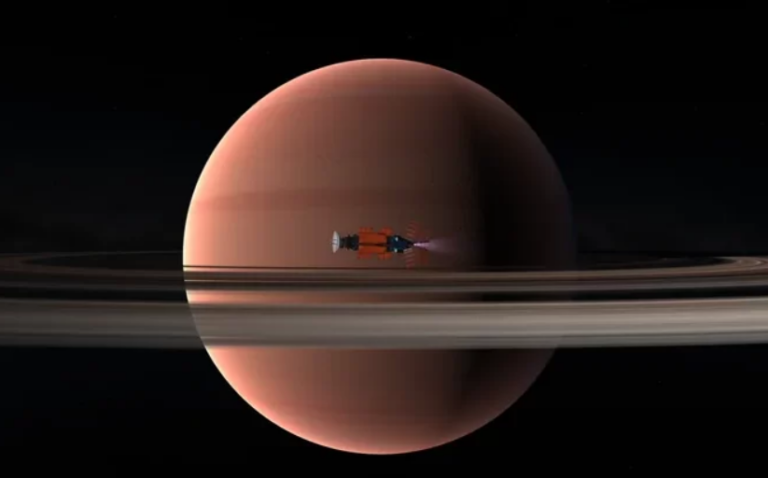Direct Fusion Drive Could Get Us to Saturn in Just 2 Years
Some specialists estimate that an appropriate propulsion system could reduce the flight time to Saturn to two years. The Princeton Plasma Physics Laboratory is currently working on a concept known as the direct fusion drive (DFD), and it will laugh at 930 million miles, the distance between Earth and Saturn.
Some researchers over there are of the opinion that the Princeton field reversed configuration-2 (PFRC-2) drive may be the solution for interstellar travel.
Titan, one of the Saturn’s moons, was chosen by the members of the research team as the best moonshot. The #1 moon of interest in our solar system is Titan because of surface liquids, and that they are hydrocarbons turn Titan into a potential refueling stop on some futurist space highway.
Universe Today reports:
“The engine itself utilise many of the benefits of aneutronic fusion, particularly, achieving an extremely high power-to-weight ratio” the press release states. “A drive in a DFD can differ in mass of fuel and carries deuterium and a helium-3 isotope The idea of the DFD is to take the extremely high specific impulse of electric propulsion systems and add to them the superb thrust of chemical rockets as a blend of the best space flight systems. ”
In a way this is very much like how hybrid consumer vehicles are designed. It is important to understand that electric sometimes gives the best, most efficient nudge, while other times, fossil fuels remain the optimal solution. The PPPL direct fusion drive is being studied in two modes: One scenario where it constantly thrusts, and another where it only thrusts to reach top speed at the start, like a Prius car. Depending on the mode of travel, it can take between 2-3 years to get to Titan.
As even larger spacecrafts in our present day thinking are still much smaller than homes or businesses of Terran scale, the reactor itself is still small. “Using plasma heating system, DFD develops nuclear fusion engines in the range of 1 to 10 MW for manned solar-system travel, robotic solar- system voyages, and interstellar voyages,” the PPPL researchers summarized.
Similar to most rocket engines, the interior’s plasma is heated to the performance temperature by the help of radio waves. Its design is open at one end to develop thrusts as energy gets released very fast.
For now, this design, as Universe Today jokingly says about all of nuclear fusion, is about 30 years away. This is because 2046 is the next available window to travel to the Saturn’s satellites, making it a deadline for PPPL scientists to work towards. One of the other advantages of their DFD design is that it can provide energy to the internal networks of the ship.
This means that the ship research, life support and propulsion will all be powered by one efficient drive.
Many decades might elapse before someone sets foot on one of Saturn’s moons. But when they do, it will be a Titanic achievement.
Do not forget to share your opinion with us to provide you with the best posts !




0 Comments